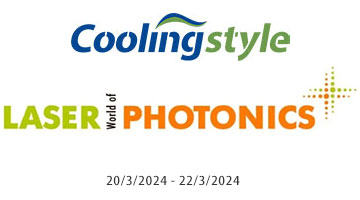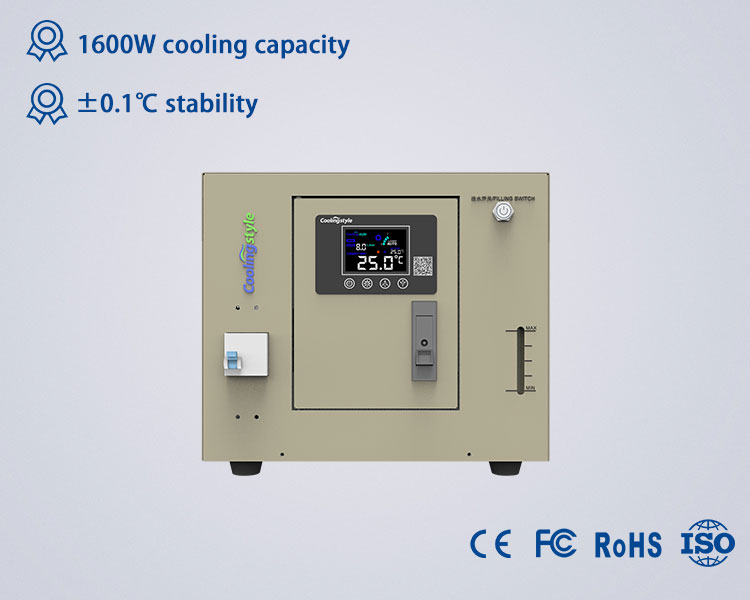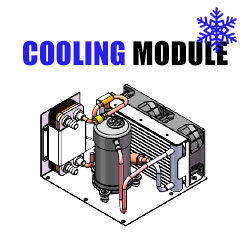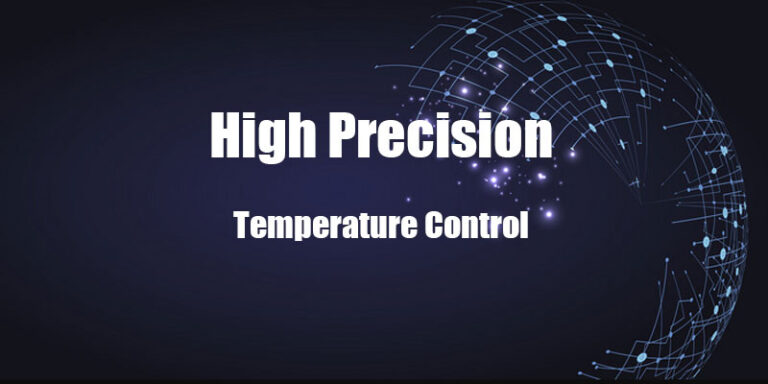Most lasers need a liquid chiller for cooling because in the energy conversion process that occurs with laser, only a part of the electrical energy is converted into laser energy. A large amount of energy becomes heat that needs to be quickly diffused away or carried away.
Today we will take the CS-MRC-Q580 industrial miniature chiller from Coolingstyle for reference. Our original goal was to develop a miniature chiller with the features of small size, lightweight, and high-accurate temperature control. It can be used for a wide range.

1. Choose a suitable compressor
In this miniature chiller, we use a micro DC Compressor with variable frequency. With only 90mm height and no more than 1000g weight, the compressor provides more than 500W cooling capacity. We all know that the compressor is the heart of a cooling system. Choosing the right compressor is the first step to design a micro chiller.

DC compressor allows flexible power supply options. The typical power supply of the compressor is DC 24V. It allows a voltage range from 20V to 30V, so you can use Li-ion Battery for the chiller if you want. In the default design of the chiller, there is a power switch in the chiller to convert the AC power into DC 24V. So the chiller can use both AC 110V or AC 220V because of this power switch. Our factory default setting is AC power supply, but DC24V is also available. (Please notice to specify your requirements with our sales before the orders.)
There are 2 outstanding advantages of this micro compressor.
Firstly, there are two internal compression cylinders in the compressor. This will help reduce vibration and noise when the compressor is at a high rotation speed.
Secondly, the compressor rotation speed range is 2000 RPM(one revolution per minute) to 6000 RPM. The higher the speed of the compressor, the greater the cooling capacity of the chiller. The compressor adjusts the rotation speed itself to provide relative cooling capacity to match the heat load.

2. The gas cycle and liquid cycle in the chiller
Number ⑨ is the water pump and number ⑩ is the water tank.
From the diagram we can see the liquid comes from the tank then it goes through the evaporator and the heat exchanger. Then the chiller conveys the cold liquid to the heat load, such as the laser.
There is a small DC brushless pump in the chiller. The pump provides about 2-5L/min liquid flow. We have a water level sensor in the tank to detect whether the liquid is sufficient for the chiller to run. As for the low ambient temperature using, a heater is needed in the tank to adjust the temperature.

3. Control method.
PID is one of the automatic control algorithms. We use the PID control algorithm to stabilize the liquid temperature at ±0.1C. We use a 16-bit digital signal acquisition chip to collect temperature signals. Then the PID controls the compressor speed until the compressor provides a cooling capacity that matches the heat load. Finally, the liquid temperature stays in the range of 0.1C.
Now we know the rotation range of the compressor is 2000RPM to 6000RPM. When there is no heat load or the heat load is very small, the compressor will run at the lowest speed 2000RPM. Yet the cooling capacity is still large for the heat load. In this situation, a heater plays an important role in stabilizing the temperature. We use the PWM control method for the heater to create the heat load. This heat load is near to the cooling capacity when the compressor runs at the lowest speed. So the temperature of the liquid is in the range of 0.1℃.

Other features of the CS-MRC-Q580 miniature chiller
a). Flow rate observation. There is a flow rate sensor in this chiller, and you can observe the flow rate on the screen. It helps you to check whether the pump works well or not, also it tells you the quality of the liquid. When we use the chiller for laser cooling, 20-25℃ is a common setting. In the meantime, the microorganisms could grow fast in the liquid circulating system. So the liquid could get dirty after 7*24 hours working after several weeks. When we see the liquid flow rate is getting smaller than 0.5L/min, then we should check if the liquid is dirty and change it.
b) RS485 communicate function. RS485 is an optional choice if you need it. The communication protocols such as baud rate and the number of bytes and so on can be provided. You can get information via RS485 on compressor speed, the current temperature, setting temperature, liquid flow rate, and so on. And also you can set the temperature or shut down the system by RS485 communication function.

Why choose us?
 | |||
| CS-MRC-Q420AC01 | CS-MRC-Q580AC01 | Model | XXXX |
| 420 | 580 | Cooling capacity(W) | 500 |
| DC inverter compressor | Compressor type | AC rotary compressor | |
| 620(MAX) | 640 (MAX) | Power consumption(W) | 760 |
| 35*25*22 | Chiller size(cm) | 58*29*47 | |
| 10.5 | 11 | Chiller net weight(kg) | 23 |
| ±0.1 | Temperature precision(℃) | ±0.2 |










